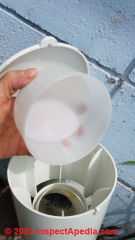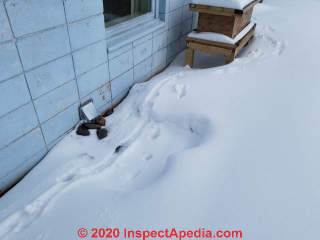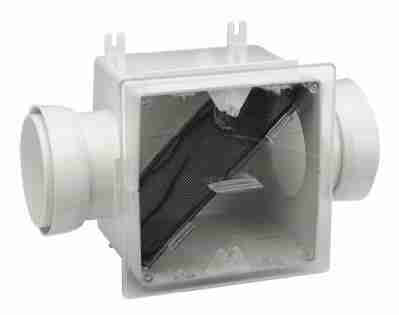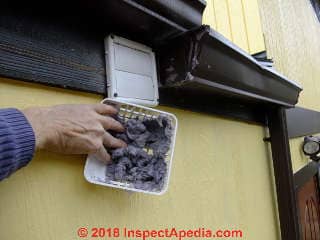 Lint Clog Resistant Dryer Exhaust Vents
Lint Clog Resistant Dryer Exhaust Vents
Hazards of & solutions for lint-clogged clothes dryer exhaust vent covers
- POST a QUESTION or COMMENT about this article topic
This article describes solutions to lint-clogging at clothes dryer exhaust vent terminations or screens like the one shown above on this page.
Lint-clogged clothes dryer exhaust vents are a potential fire hazard (causing dryer overh-heating, especially in older dryer models), and lint clogging is responsible for other troubles too including extra long time required to dry clothing, increased clothes drying costs and energy use, and in addition, lint at the dryer exhaust duct termination cover or door can jam the door open inviting rodent infestations and cold air back-drafting into the building.
InspectAPedia tolerates no conflicts of interest. We have no relationship with advertisers, products, or services discussed at this website.
- Daniel Friedman, Publisher/Editor/Author - See WHO ARE WE?
Dryer Exhaust Vent Covers to Avoid Lint Clogging
Clothes dryer vents that resist lint clogging, and about use (or recommendations against using) supplemental lint filters in dryer vent and duct systems are discussed here and in this article series.
Air-Operated Exterior Clothes Dryer Wall Vents Avoid Lint Clogging
Air-Operated Exterior Wall Vents for clothes dryer vent lines are available at hardware stores, building suppliers, and from some online sources.
These devices use a movable plastic cylinder that lifts to permit venting of the laundry dryer exhaust when the dryer is operating. The opening is not screened when the vent is open, so lint clogging is practically eliminated. When the dryer stops operating the plastic cylinder returns to its closed position. [1]
Air operated clothes dryer wall vents may be a way to avoid clothes dryer fire hazard and high energy cost troubles.
The Dundas "Draft Blocker" dryer vent shown above and the Lambro Dryer Vent that is operated by dryer air pressure (shown below) are designed to prevent back-drafting of cold outdoor air into the building through the clothes dryer exhaust vent termination or cover.
Such back-drafts can occur when the dryer is not in use.
Watch out: as we point out at CLOTHES DRYER FIRE HAZARD WARNINGS some of these dryer vent terminations and screens can be invaded by small animals, and even these wide-opening clothes dryer vents need periodic inspection and lint cleaning.
Below you can see our installation of this Lambro brand dryer exhaust vent in Two Harbors, Minnesota.
Click to enlarge the image and notice that silver tape on the outer side of the elbow.
This is in our OPINION a terriffic dryer exhaust vent design for a close-to-ground location like this one as it keeps out the mice and it requires much less frequent lint-cleaning.
But the product is made of the cheapest possible plastic materials, so cheap that they're easily cracked or broken.
This vent was cracked before we even finished its installation, which is why, in disgust, I [DF] patched it with aluminum foil tape.
Good design, cheap materials.
This Lambro vent was installed to replace the mouse-infested dryer vent shown below:
Clothes Dryer Lint Traps are Prohibited
Watch out: Clothes Dryer Lint Traps:
like the unit illustrated above and sold a variety of manufacturers and online stores are intended to be installed somewhere between the clothes dryer outlet and the dryer vent outlet - these are are also not recommended in some dryer installation manuals, are prohibited by some building codes, and can similarly cause overheating and fires.
See details at CLOTHES DRYER LINT FILTER HAZARDS
Clothes Dryer Exhaust Vent Covers Must Close to Avoid Back-Drafting
As we illustrate with this reader Q&A below, lint clogging of clothes dryer exhaust openings also can jam the vent cover open, causing un-wanted cold air backdrafting into a building.
On 2020-09-27 by JK - need backdraft damper on dryer outlet to prevent backflow from common vent into my dryer?
My condo is 2nd floor with no one above me. Unit below has new owners who purchased a new dryer. After years with no problems whatsoever, I am now experiencing excessive backflow into my dryer (i.e. heat, moisture & odor from their laundry products). Our entire complex had the vents professionally vacuumed and that didn't help.
The same company suggested and installed a backdraft damper to the back of my dryer. It helped somewhat at first, but now they're telling the issue is bad again because the damper is made of metal and lint easily clings to it (thus causing the flap to stay open).
NOW their telling me THEY aren't allowed to do this themselves, but that I should have someone install a "cheap" PLASTIC backdraft damper and that "should" solve the problem. Do you agree... and is this safe?? If you say no, I'm at a complete loss what to do about this! Thanks!
On 2020-09-27 - by (mod) - need backdraft damper on dryer outlet to prevent backflow
@JK
In my OPINION the installers are actually terrified of the liability should there be a subsequent fire or mold lawsuit around the dryer venting - and I don't blame them as the whole setup and users are beyond their control.
I certainly can't bet your life and my retirement on a promise of safety about your duct system, as I'll explain.
I suspect that the issue is less about plastic vs metal than about air velocity and shared duct design for dryer venting - not something on which I am expert.
I'm doubtful that the installation instructionsfor your clothes dryer anticipate sharing a duct system and I suspect that if you contact the dryer manufacturer for advice (which might be helpful) they too will be nervous about giving advice becausenot in your message nor, I suspect among the experts whom you've consulted is a shred of actual data.
Perhaps what's needed is an onsite engineer who has expertise in duct design and air flow.
On 2020-09-28 by JK
Thank you for responding. I already know the issue itself is being caused because we share the same duct system.
The former owner had an older dryer which (in simple terms) didn't "blow" as hard as the newer versions. Changing the design of the duct system isn't an option for a variety of reasons so I'm stuck with that. The suggestion of going with a plastic damper was based on feedback from other customers who needed to resolve the same problem, and from what I was told it has worked for the majority.
It appears trying the plastic is my only option. Just wish I was physically able to put it on myself instead of hiring out (total waste of $$ for the metal damper install)!
On 2020-09-28 - by (mod) -
@JK
functional & safety hazards of shared clothes dryer exhaust vent system
Thanks for the added info JK.
I am sure I'm missing something here but what leaves me concerned is that putting a one-way vent or flapper in the duct system doesn't seem to overcome the potential problem of higher pressure already in the main duct when other dryers are operating.
On 2020-09-28 by JK
The backflow damper will be on the back of my dryer. If it works properly, the flap will stay closed when mine isn't running and all the air coming from dryer below will flow UP and OUT the stack on the roof. Right now, the metal damper has (from what I've been told) collected enough lint to cause the flap not able to close.
BTW. the guy that installed the damper (who works for the vent cleaning co,) said the roof stacks on our buildings weren't designed to handle the increased flow from newer dryers and needed to be updated.
When I contacted them later, the woman I spoke with said he was wrong and never should have told me that (even if he's correct our association would never approve it just because of MY complaint).
She DID say this was a common problem in multi-structure buildings though! Anyway, in the meantime I'm running my dryer on air only to clear out the moisture and PERFUME (can you tell I only use unscented products Lol?). Thanks again for your input!
On 2020-09-28 - by (mod) -
@JK
Here is how this lint-clog-resistant clothes dryer exhaust vent works: air exiting the exhaust vent duct enters the vent elbow and pushes a lightweight round plastic cap or cylinder "up" to allow air to flow out of the vent base.
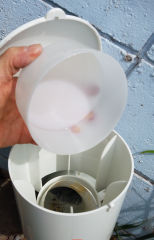
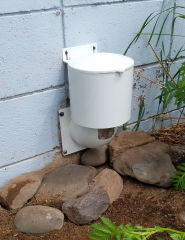
I understand.
By the way, having installed, cleaned, repaired, replaced dryer exhaust systems, ducts, and terminations since the 1970s I offer my OPINON based on my experience that there is not a shred of difference in the propensity of dryer lint to stick to plastic versus metal vents or flues;
What does make a difference are moisture variations, air velocity, and the actual geometry of the vent openings - which is why plastic grids and metal mesh over a vent opening are prohibited.
Recently at a home in northern Minnesota I replaced a traditional metal dryer vent termination that had a long and nasty history of clogging, mouse infestation, and infected hand cuts on those trying to clean the vent with a different type of plastic vent (not one that would work for you) that uses a rising cylinder rather than a flapper door to exhaust the dryer air.
This provides a very large, unobstructed vent opening when the dryer is running. After six months of moderate to heavy use we found only trivial amounts of lint in this vent assembly.
You will note that this dryer exhaust was located much too close to the ground surface - which as I show in other photos explained, in part, the annual migration of mice into the dryer vent system each fall.
Your installation of a vent control right at the dryer outlet may prevent backdrafting but it will not help one iota with the problem of an overloaded shared exhaust vent system and the backpressure your dryer will encounter.
Older clothes dryers sometimes caught fire and even started building fires from blocked or restricted exhaust venting - this was a far more serious hazard than simply slowing air flow causing a longer time to get clothes to dry.
At least some new clothes dryers include sensors that are designed to monitor temperature and to either turn off the heater or turn off the dryer entirely if its temperatures become too high and thus unsafe and risking a fire.
You might check with the manufacturer of your newer dryer (perhaps thus a safer model).
Stay safe, wash your washable face mask and dry it on low heat or no heat, and thank you for the discussion that will doubtless help other readers. I'll move all of this up into the page above.
And below, discussed elsewhere in this article series, I'm cleaning incredibly thick lint that accumulated in an (illegal and improper and unsafe) plastic clothes dryer vent and screen.

On 2020-09-28 by JK
The neighbors under me have a brand new dryer, but mine is at least 17 yrs. old (it was here when I bought my condo in 2003). It still works great, but I'm willing to buy a new one if it will help resolve this issue (I'm guessing it won't but worth asking)???
On 2020-09-29 (mod) - backdraft damper on dryer outlet: hazards vs. benefits
@JK
I appreciate the discussion; what's troubling is that we're speculating with no objective data.
1. will your dryer model shut down if it's temperature becomes too hot and thus unsafe, as could happen if your vent is inadequate (at least under some operating conditions)
2. do you have all of the measurements: duct diameters, lengths, number of elbows, state of cleanliness, rooftop termination details, and
3. has anybody actually measured airflow rates?
Odors and back-drafting from the dryer below are annoying but my greater concern was inadequate venting that we discussed below.
OPINON: buying a new dryer that has more safety features and (maybe) more-powerful exhaust might be useful but I honestly can't say.
...
Continue reading at CLOTHES DRYER LINT FILTER HAZARDS, or select a topic from the closely-related articles below, or see the complete ARTICLE INDEX.
Or see these
Recommended Articles
- CLOTHES DRYER INSTALLATION & REPAIR - home
- CLOTHES DRYER ASBESTOS
- CLOTHES DRYER FIRE HAZARD WARNINGS
- CLOTHES DRYER FIRE RESEARCH
- CLOTHES DRYER LINT FILTER HAZARDS
- CLOTHES DRYER LINT CLOG RESISTANT SCREENS
- CLOTHES DRYER SAFETY CHECKLIST
- CLOTHES DRYER TEMPERATURES
- CLOTHES DRYER TEMPERATURE MEASUREMENTS
- CLOTHES DRYER VENTING - home
- CLOTHES DRYER VENT BOOSTER FANS
- CLOTHES DRYER VENT CLEARANCES & TERMINATION
- CLOTHES DRYER VENT CODES
- CLOTHES DRYER VENT ENERGY SAVINGS
- CLOTHES DRYER VENT INSTALLATION
- CLOTHES DRYER VENT TERMINATION & SCREENS
- DRYER EXHAUST VENT DUCT MATERIAL & SIZE
- DRYER EXHAUST VENT HOOD TYPES
- DRYER EXHAUST VENT INSTALLATION & ELBOWS
- DRYER EXHAUST VENT ROUTING OPTIONS
- DRYER EXHAUST VENT MISTAKES
- DRYER EXHAUST VENTED INTO ATTIC
- DRYER EXHAUST VENTED THROUGH ROOF
- DRYER EXAUST VENTED INTO CRAWL
- DRYER INSTALLATION & OPERATION MANUALS
Suggested citation for this web page
CLOTHES DRYER LINT CLOG RESISTANT SCREENS at InspectApedia.com - online encyclopedia of building & environmental inspection, testing, diagnosis, repair, & problem prevention advice.
Or see this
INDEX to RELATED ARTICLES: ARTICLE INDEX to APPLIANCE REPAIR
Or use the SEARCH BOX found below to Ask a Question or Search InspectApedia
Ask a Question or Search InspectApedia
Try the search box just below, or if you prefer, post a question or comment in the Comments box below and we will respond promptly.
Search the InspectApedia website
Note: appearance of your Comment below may be delayed: if your comment contains an image, photograph, web link, or text that looks to the software as if it might be a web link, your posting will appear after it has been approved by a moderator. Apologies for the delay.
Only one image can be added per comment but you can post as many comments, and therefore images, as you like.
You will not receive a notification when a response to your question has been posted.
Please bookmark this page to make it easy for you to check back for our response.
IF above you see "Comment Form is loading comments..." then COMMENT BOX - countable.ca / bawkbox.com IS NOT WORKING.
In any case you are welcome to send an email directly to us at InspectApedia.com at editor@inspectApedia.com
We'll reply to you directly. Please help us help you by noting, in your email, the URL of the InspectApedia page where you wanted to comment.
Citations & References
In addition to any citations in the article above, a full list is available on request.
- In addition to citations & references found in this article, see the research citations given at the end of the related articles found at our suggested
CONTINUE READING or RECOMMENDED ARTICLES.
- Carson, Dunlop & Associates Ltd., 120 Carlton Street Suite 407, Toronto ON M5A 4K2. Tel: (416) 964-9415 1-800-268-7070 Email: info@carsondunlop.com. Alan Carson is a past president of ASHI, the American Society of Home Inspectors.
Thanks to Alan Carson and Bob Dunlop, for permission for InspectAPedia to use text excerpts from The HOME REFERENCE BOOK - the Encyclopedia of Homes and to use illustrations from The ILLUSTRATED HOME .
Carson Dunlop Associates provides extensive home inspection education and report writing material. In gratitude we provide links to tsome Carson Dunlop Associates products and services.


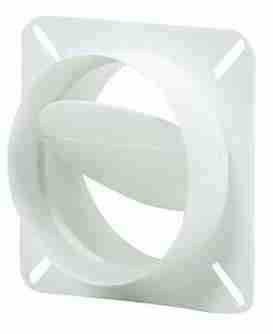
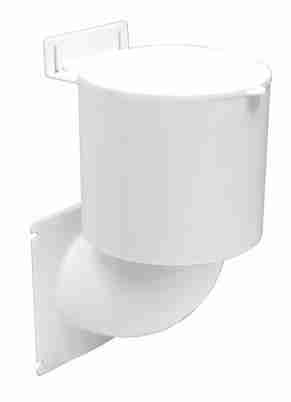
 ...
... 